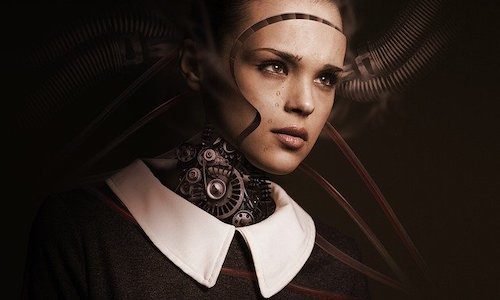Maybe you are used to being around industrial robots. If you operate industrial machines, you know that robots make us more comfortable rather than uncomfortable. However, there are some people who are made uncomfortable by robots — specifically robots that look like people.
Human-like robots make people uncomfortable
The average person outside of the manufacturing industry may think of a humanoid robot when asked to think of a robot. You know, like the T1 from The Terminator or replicants from Blade Runner. Pop culture and science fiction are the sources of robot-understanding for many people.
Of course, if a robot could travel through time or be indistinguishable from a living, breathing person, it would make sense if those robots made you uncomfortable.
But people get uncomfortable simply when robots start to look like people. Not the Autobot or Astroboy variety of robot, but androids. People like humanoid robots until they start looking a little too human.
So why do humanoid robots bother people?
Welcome back to the uncanny valley
The uncanny valley isn’t a new concept. Researchers continue to study just what it is about human-like things that people find unsettling.
Imagine that you’re walking through an art gallery with different works on display.
First you see an abstract painting of a person that doesn’t look much like a person. Next you see a doodle of a person with distinguishable facial features.
You keep walking and see a sketch of a person drawn by someone with some artistic talent, followed by a realistic portrait done by a professional painter.
Next you see a realistic marble bust of a human, and finally you see a hyper-realistic silicone mask that looks like a real person’s face.
In theory, you would find each work more and more appealing, until you reach the mask that looks a little too lifelike.
The idea with the uncanny valley is that people like things that resemble people up to a certain point. Things are increasingly appealing as they look more and more human-like.
That is, until we get to the point at which something looks so human that it takes us a second (or 400 milliseconds) to realize that it’s not actually real. The appeal plummets, and people are repulsed or disgusted by things that very closely resemble humans, but are clearly not human.
How did we get in this valley?
Explaining the uncanny valley is not as simple as saying we don’t like things that look like us, but aren’t us. That may be the short and long of it, but it doesn’t give you the reasoning behind the feelings of disgust.
One popular explanation — the mind-perception theory — suggests that people automatically add a mind to human-like things; the idea that a non-human thing has a mind is what creeps people out.
A study from Emory University suggests that it’s not giving non-human things a mind that makes people uncomfortable, it’s taking that mind away.
It’s a chain reaction of responses that lead to that uncanny feeling.
- We identify things that closely resemble humans.
- Because they are human-like we imagine them as having a mind like we do.
- But the scary part is when we then dehumanize the human-like thing and take the mind away.
The Emory experiment specifically examined the uncanny valley in the context of androids.
Participants in the experiment were shown pictures of human faces, mechanical-looking robots, and human-like android faces. While the participants quickly identified the human and robot faces, their ability to perceive animacy or “aliveness” in the androids faces waned as the exposure time and detail in the images decreased.
Wang Shensheng — one of the lead researchers on the team — said, “Our results suggest that at first sight we anthropomorphize an android, but within milliseconds we detect deviations and dehumanize it. And that drop in perceived animacy likely contributes to the uncanny feeling.”
